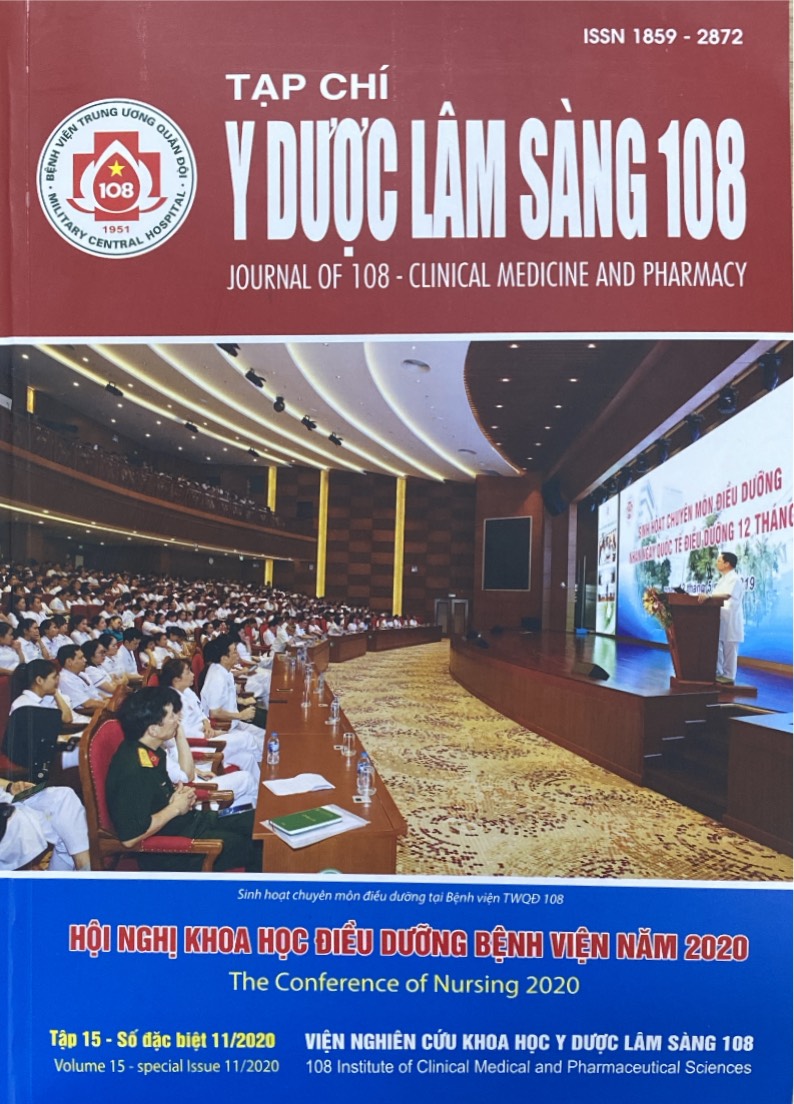Prevalence and risk factors of hypertension in patients after kidney transplant surgery
Main Article Content
Keywords
Abstract
Objective: To evaluate the prevalence and characteristics of hypertension in patients after kidney-transplant surgery and other related factors. Subject and method: Fifty-seven patients have performed kidney transplants at 108 Military Center Hospital from December 2016 to March 2020. This was a retrospective and prospective study, blood pressure was measured daily before and early post-transplantation, and 10 days continuously. Result: Mean blood pressure after surgery was 141/85 ± 14.6/10.3mmHg. The mean hypertension days was 7.1 ± 2.68 days. In total 618 days, blood pressure of 57 patients was measured, the prevalence of hypertension was 68.1%. The prevalence of grade 1 hypertension and mix hypertension were 45.7% and 41.1%, respectively. Dialysis more than three years and inadequate blood pressure control before the operation were risk factors that increase the likelihood of post-surgery hypertension, with OR were 1.92 (1.10 – 3.51) and 2.03 (1.36 - 3.07), respectively. Diastolic blood pressure had weak positive relationship to BMI (r = 0.219; p<0.001), but systolic blood pressure had no relationship to BMI. Conclusion: Hypertension after kidney transplant surgery was popular. Factors that caused high blood pressure were long dialysis duration and inadequate blood pressure control. In contrast, low BMI and deceased kidney donor were lowered hypertension risk.
Article Details
References
2. Đỗ Tất Cường và Bùi Văn Mạnh (2009) Nghiên cứu chức năng thận ghép và một số biến chứng thường gặp sau ghép thận. Tạp chí Dược học Quân Sự, 34(3), tr. 30-35.
3. Hội Ghép tạng Việt Nam (2017) Theo dõi và điều trị sau ghép thận. Hướng dẫn ghép thận Việt Nam. Nhà xuất bản Y Học, Thành phố Hồ Chí Minh, tr. 92-241.
4. Hội Tim mạch học Quốc gia Việt Nam (2018) Định nghĩa và phân loại tăng huyết áp. Khuyến cáo về chẩn đoán và điều trị tăng huyết áp, tr. 6-7.
5. Bots ML, Witteman JC, Hofman A et al (1996) Low diastolic blood pressure and atherosclerosis in elderly subjects. The Rotterdam study. Arch Intern Med 156(8): 843-848.
 ISSN: 1859 - 2872
ISSN: 1859 - 2872
